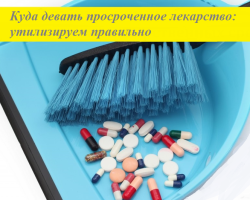Instructions for conducting a puncture of the knee joint.
Content
The puncture of the knee joint is a fairly common manipulation in orthopedics, as well as traumatology. In this article we will tell. What is puncture and how it is carried out.
What is and when do you need a puncture of the knee joint?
There are several reasons why you need to do a puncture. It is nothing more than the introduction of the needle deep into the joint bag. This can be done for the following reasons.
Purpose of puncture:
- In order to suck pus, as well as fluids in order to clean the joint from exudate
- Diagnostic manipulations aimed at determining the nature of the fluid that accumulates in a synovial bag
- For the introduction of antibiotics, corticosteroids or chondroprotectors, in order to treat joint pathology
- The introduction of carbon dioxide or oxygen to eliminate adhesions inside the joint

This is a rather simple manipulation, but requiring certain skills, as well as experience. It is not done at home with a nurse, but is carried out exclusively in a hospital, an experienced doctor as a traumatologist or orthopedist. In order for the manipulation to be successful, the needle is introduced directly into the joint no deeper than 3 cm. This is necessary so as not to hurt the internal components of the joint.
The needle is inserted into the cavity of the synovial bag. Different needles can be used to carry out manipulation, with a completely different diameter. In order to start oxygen, needles are used with a diameter of not more than 1 millimeter. If the puncture is aimed at sucking pus from the charter, then needles with a diameter of 2 mm are taken so that it can be successfully taken away by blood, as well as small clots inside synovial bags.

Indications for the puncture of the knee joint
Quite often, puncture is carried out with an ultrasound scan in order to be sure where the needle will get. This method is necessary if you need to select the liquid from a specific place.
P puncture can be used in the treatment of many diseases:
- Deforming arthrosis. Most often, corticosteroids are found into the joint cavity in this ailment to remove pain.
- Joint injuries with edema. Immediately after the injury, blood can pump out, as well as fluid from the joint. This often happens with contact sports, such as football or basketball, as well as when hit in karate, in the area of \u200b\u200bthe knee cup.
- Bursit, arthrosis, synovitis of the knee. In order to clean the area of \u200b\u200bthe knee cup of pus, exudate. In the course of such manipulation, all the contents are completely sucked. Next, a solution of antiseptic is carried out in order to prevent the reproduction of pathogens of microorganisms. Only after this is an analgesic substance or non -steroidal anti -inflammatory drugs, in order to eliminate pain.
- Infectious joint pathologies. Quite often, puncture must be repeated. That is, it may not be a one -time procedure if treatment is carried out with its help. Several times, this procedure is usually carried out with deforming arthrosis, as well as synovitis and Burit. That is, when pus or blood accumulates inside. The reusable conduct of puncture is aimed at stopping the growth of pathogens.

How is the knee joint puncture?
Instructions:
- At the very beginning of the procedure, the skin is disinfected using an antiseptic. It is slightly shifted so that the needle enters either from the side or a little from below. After that, the needle moves very slowly to a depth of about 3 cm.
- The points for the input are in certain places that the orthopedic doctor knows. After that, the administration of drugs or pumping, a fiber for analysis, cleaning the joint from pus, exudate is carried out.
- After that, the needle is very neatly displayed and a gauze bandage is applied to the area of \u200b\u200bpuncture.

Advantages and contraindications to the puncture of the knee joint
Why is it impossible to use the antibiotic intramuscularly or intravenously? The fact is that there are separate categories of patients who are not recommended to work out antibacterial drugs into the muscle or vein region. This is due to diseases of the liver and kidneys. You can not use tablet drugs for diseases of the stomach. Sometimes the introduction of the drug into the joint with a puncture is the only possible way that allows you to get rid of pain, as well as cure a specific ailment.
There are also contraindications in which this kind of manipulation cannot be done. Despite the fact that this is a minimally invasive technique, it cannot be made to people with systemic and diseases, as well as with ailments of the endocrine system. Puncture is not carried out if a person has psoriasis, wounds in the joint, there are some damage.

Puncture is an excellent diagnostic procedure, and also helps to save money. Because very often a lot of money is spent on the selection of effective drugs. The drugs are not always completely absorbed in the intestines. This may be due to diseases of the digestive tract, when not all drugs completely penetrate the body. Accordingly, puncture is sometimes the only possible procedure that will allow the patient to recover, to stop the progression of the disease.







